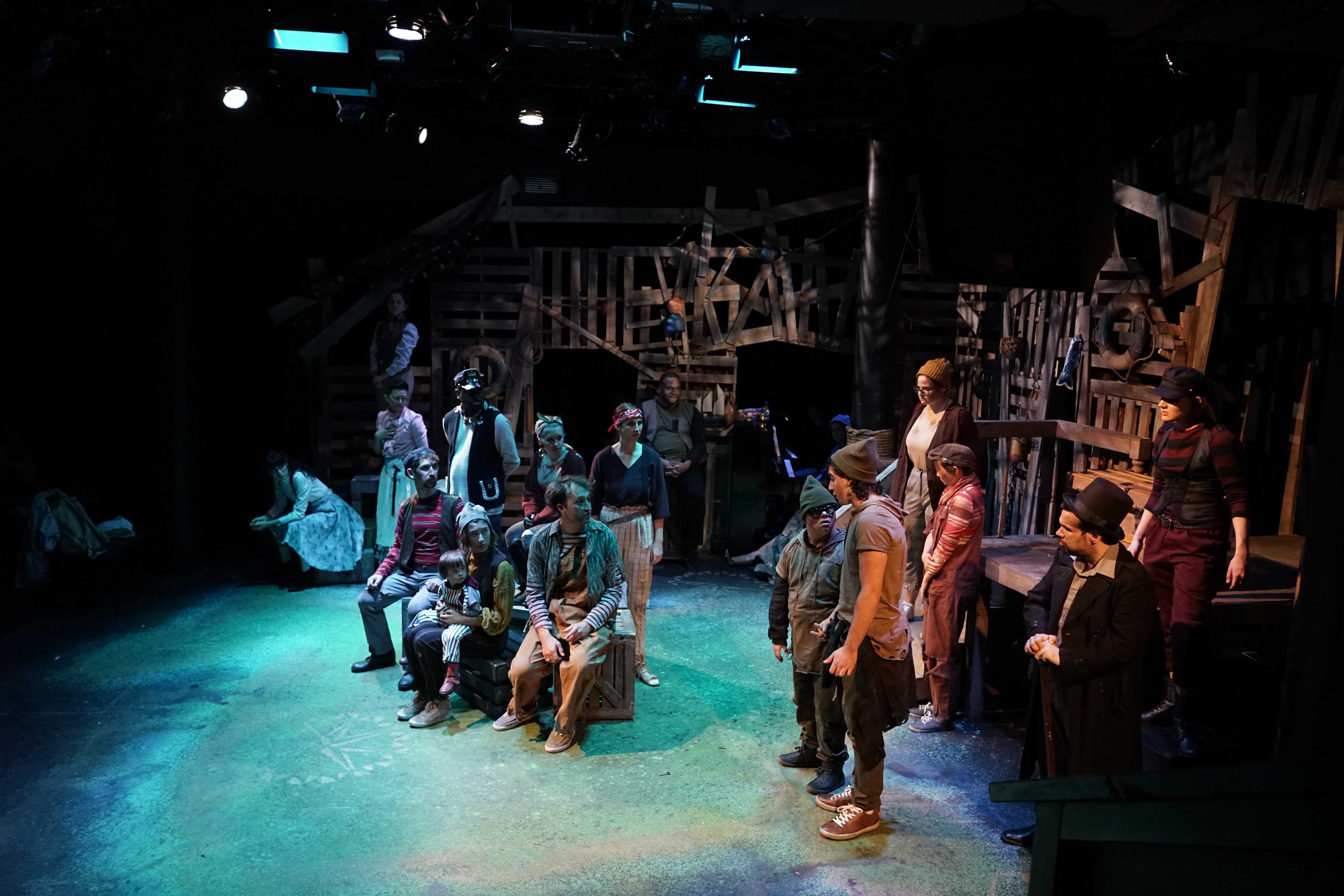On Oct. 19, NYU Steinhardt’s Educational Theatre program opened its adaptation of “Peter and the Starcatcher” by Rick Elice. The play serves as a prequel to Disney’s “Peter Pan,” introducing Boy, yet to be Peter Pan, and Molly, yet to be Wendy’s mom. Boy and Molly go on a heroic mission amid a fight between ships, and come into their skin along the way. But what makes this production special, and representative of the program’s values, is the developmentally diverse cast.
At its most stereotypical level, a group of developmentally diverse actors includes artists who do not fit the box of an able-bodied person. While the cast of “Peter and the Starcatcher” does fit that definition, it does more to expand it. Steinhardt’s production shows how individuals’ differences are what make theater beautiful. A key component to the success of this show is that it is built with accessibility in mind. Accessibility in theater can often be seen through closed captioning, a sign language interpreter offstage or an audio describer for blind audience members. While these efforts do make theater more accessible, the production team of “Peter and the Starcatcher” make sure that accessibility is not a last-minute thought.
“Access was the very goal of this production,” Stage manager and Educational Theatre senior Cassie Holzum said. “From the auditions we made sure that we had support from our accessibility consultant [Adam Stevens] and support consultant [Shayna Blecherman] and that we met every actor where they were.”
Holzum went on to say that Director and Steinhardt Professor Amy Cordileone stressed the importance of working with actors at their current level. Meeting actors where they were first meant setting each actor up for a successful audition. While some read monologues, some told a story about their summer. Neither audition was considered better than the other; rather, they both allowed actors to truly show their talent.
“Our goal has really been to set everyone in the room up to succeed on an [individual basis],” Holzum said. The steps taken by the production team exemplify the benefits of the use of accessibility from the start.
A beautiful example of how accessibility was at the core of this show was the casting of Boy. In the show, the character of Peter develops through Boy, an unnamed orphan. Michael Manzi plays the child from the start, and is soon joined by Sean McGowan, an actor with Down Syndrome, as Boy evolves into Peter. To date, there are only two known actors with the genetic condition to hold a lead in an off-Broadway show, a testament to the lack of diversity in theater.
While having Down Syndrome can be thought to limit abilities, Cordileone and the rest of the “Peter and the Starcatcher” team found a way to showcase McGowan’s talents and starpower. McGowan and Manzi work as a team to tell Boy’s story: McGowan echoing lines of importance, protecting Manzi and being protected by him. McGowan’s character maintains the spirit of the young boy that Manzi fears he is losing as he discovers Peter. McGowan is offstage for moments of maturity for Boy, as that side of the character is solely represented by Manzi. Through McGowan’s performance, the audience finally sees how Peter manages to “never grow up.” The dynamic between McGowan and Manzi served to enhance the plot, not to distract from it, unlike more traditional vehicles of accessibility that force the audience’s attention away from the performance.
“[I hope that the audience] can embrace and love [the cast] and see not the differences we’ve overcome but the bond we’ve created and similarities we share,” Holzum said.
Many associate accessibility solely with individuals whose needs are categorized as “special.” For Jules Talbot, a first-year in Educational Theatre and Black Stache/Ensemble member, this process has shown her how that is not the case.
“We speak about ability and disability as if it’s a binary, but it isn’t. There’s a spectrum of difference, and we all exist somewhere on it,” Talbot sait. “There aren’t only ‘special needs.’ Everyone has needs, needs which have to be met so that we can feel heard and valued. In the rehearsal room of ‘Peter,’ everyone’s were taken into account.”
As “Peter and the Starcatcher” heads into its closing weekend, it is essential to experience this story through the extremely talented and developmentally diverse cast of Steinhardt. As an audience member, I walked away with a deepened awareness of myself, the people around me and the continuing magic of theater.
Email Liv Rocklin at [email protected].























































































































































